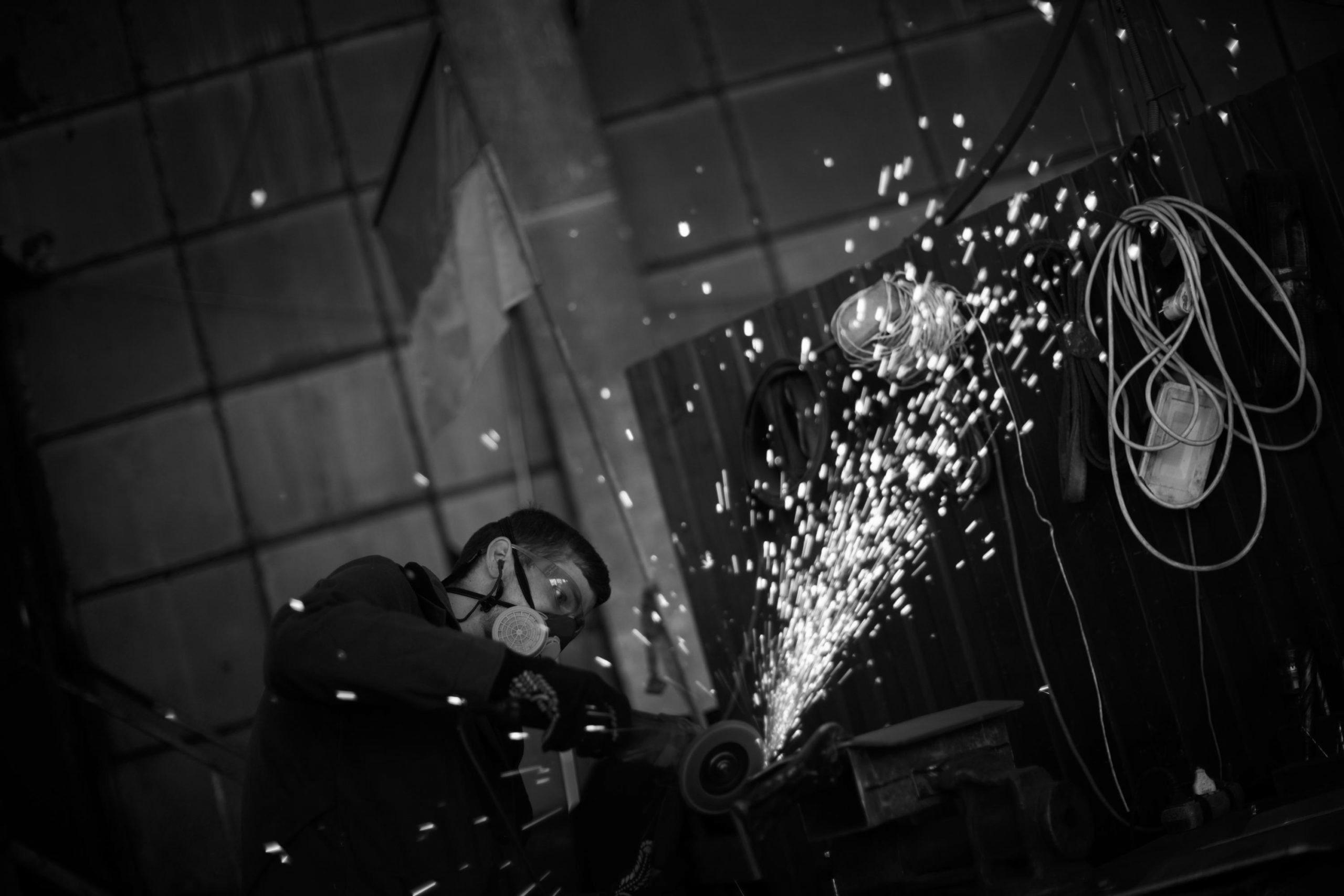Defend the body: Ukraine volunteers craft armor, camouflage
Warning: Undefined variable $post_id in /home/webpages/lima-city/booktips/wordpress_de-2022-03-17-33f52d/wp-content/themes/fast-press/single.php on line 26

2022-05-09 09:16:18
#Shield #body #Ukraine #volunteers #craft #armor #camouflage
ZAPORIZHZHIA, Ukraine (AP) — Sparks fly as a round saw slices into steel, while welders nearby work feverishly to the sound of blaring heavy metal. Upstairs, sewing machines clatter as women mark patterns on fabric being shaped into bulletproof vests.
An outdated industrial advanced in the southeastern Ukrainian riverside metropolis of Zaporizhzhia has grow to be a hive of activity for volunteers producing all the things from physique armor and anti-tank obstacles to camouflage nets, transportable heating stoves and rifle slings for Ukrainian soldiers fighting Russia’s invasion. One section focuses on autos, armor-plating some, converting others into ambulances. One other organizes food and medical deliveries.
With the entrance line about 50 kilometers (30 miles) from the town, some sections of the operation, such as the stitching of bulletproof vests, are working across the clock in shifts to meet demand. Crowdfunding has introduced in sufficient cash to purchase steel from Sweden, Finland and Belgium, which is lighter than native steel, organizers say, a vital quality for body armor.
The operation is the brainchild of native celebrity Vasyl Busharov and his good friend Hennadii Vovchenko, who ran a furniture-making enterprise. They named it Palianytsia, a sort of Ukrainian bread whose name many Ukrainians say can't be pronounced correctly by Russians.
The operation depends totally on volunteers, who now quantity more than 400 and are available from all walks of life, from tailors to craftsmen to legal professionals. Other than those involved in production, there are additionally drivers delivering humanitarian assist and medical tools purchased by way of donated funds.
“I feel I'm wanted right here,” stated fashion designer Olena Grekova, 52, taking a short break from marking material for vests.
When Russia invaded on Feb. 24, she was in Thailand looking for inspiration for her spring collection. Initially, she said, she questioned whether or not it was an indication from God that she shouldn’t return. Her husband and two grownup sons urged her to not.
“But I made a decision that I had to return,” she said.
She had recognized Busharov for years. Arriving house on March 3, she gathered her tools the subsequent day and by March 5 was at Palianytsia. She’s been working there day by day since, bar one, sometimes even at evening.
Shifting from designing backless ballgowns to creating useful bulletproof vests was “a brand new experience for me,” Grekova mentioned. However she sought suggestions from soldiers for her designs, which have armor plates added. Now she helps to produce several variations, including a prototype summer vest.
In one other part of the commercial complex, 55-year-old Ihor Prytula was busy making a brand new camouflage net, winding items of dyed cloth by a string frame. A furniture-maker by trade, he joined Palianytsia in the beginning of the battle. He had some navy expertise, he said, so it was simple to get suggestions from soldiers on what they wanted.
“We converse the identical language,” he stated.
For Prytula, the war is personal. His 27-year-old son was killed in late March as he helped evacuate people from the northern city of Chernihiv.
“The battle and demise, it’s dangerous, trust me, I do know this,” he mentioned. “It’s bad, it’s tears, it’s sorrow.”
The call for volunteers went out as quickly because the conflict began. Busharov announced his venture on Facebook on Feb. 25. The following day, 50 folks turned up. “Next day 150 folks, subsequent day 300 individuals. ... And all together, we attempt (to) protect our metropolis.”
They started out making Molovov cocktails in case Russian soldiers superior on Zaporizhzhia. In 10 days, they produced 14,000, he mentioned. Then they turned to producing anti-tank obstacles often called hedgehogs — three massive metallic beams soldered together at angles — used as a part of the city’s defenses. Soon, Busharov and Vovchenko mentioned, they discovered another pressing need: there weren’t sufficient bulletproof vests for Ukraine’s troopers.
But studying tips on how to make one thing so specialised wasn’t easy.
“I wasn’t really connected with the military in any respect,” said Vovchenko. “It took two days and three sleepless nights to grasp what must be performed.”
The staff went by varied kinds of metal, making plates and testing them to verify bullet penetration. Some didn’t provide sufficient safety, others were too heavy to be practical. Then they had a breakthrough.
“It seems that steel used for car suspension has excellent properties for bullet penetration,” Vovchenko stated, standing in front of 4 shelves of test plates with varying levels of bullet injury. The one made from automotive suspension steel showed dozens of bullet marks however none that penetrated.
The vests and all the things else made at Palianytsia are provided free to soldiers who request them, as long as they can prove they're within the military. Every plate is numbered and every vest has a label noting it's not on the market.
To date, Palianytsia has produced 1,800 bulletproof vests in two months, Busharov said, including there was a ready record of round 2,000 more from throughout Ukraine.
Vovchenko said they've heard about as much as 300 people whose lives have been saved by the vests.
Understanding that is “extremely inspiring and it retains us going,” he said.
____
Inna Varenytsia in Zaporizhzhia, Ukraine, contributed.
___
Follow all AP tales on the war in Ukraine at https://apnews.com/hub/russia-ukraine
Quelle: apnews.com